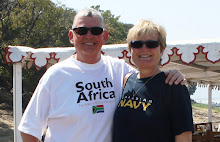 It was rush hour on the banks of the Yangon River. Small motorized boats ferried the population across the river to work or school, some picking up breakfast on the way from an array of open air vendors, others carrying a hot Tiffin tin in hand.
It was rush hour on the banks of the Yangon River. Small motorized boats ferried the population across the river to work or school, some picking up breakfast on the way from an array of open air vendors, others carrying a hot Tiffin tin in hand.Labourers offloaded 100 pound sacks of rice from the river boats. The process involved each worker picking up the rice sack and a coloured stick, both of which were deposited at the top of the ramp.
The collected sticks acted as an abacus signifying the number of bags carried and payment owed.
Walking from the river San took us to the street market. Chillies, onions, garlic, ginger, tamarind, ground spices and beans were attractively laid out in amongst makeshift kitchens serving breakfast while monks collected alms.
From here we crossed the street to the fresh market. Market goers were in good spirits and the interaction was entertaining to watch.
One lady had a troublesome child and through San wanted to know whether we would like to take him back to Canada with us.
Young boys worked an elastic dough intended for thin pancakes used in spring rolls, dumplings and soups. Other boys worked the griddles and efficiently cooked, stacked and wrapped the pancakes for sale.
Many women and children had their faces daubed with thanat khar. This ground tree bark paste provides sun protection and is also an effective cream, making the skin smooth and warding off acne.
We walked a street adjacent to a hospital where families are responsible for feeding family members who are patients – the market is ideally located for this purpose. We continued to a colourful flower, fruit and vegetable market – it was strawberry season and they looked luscious.

Traffic and people vied for their place on the road and on one corner a "Wall Street Shuffle" of sorts was underway. It’s a cash world in Myanmar, banks are not completely trusted by the locals and an underground economy prevails. Money changers walk openly carrying wads of kyat – you need lots of it – on the black market a dollar will buy around 1100 kyat.
Beyond the money changers, used book stalls lined the street and in amongst them telephone stalls. The telephone minder manages the phone line from an old rotary phone, customers paying the required fee - few people own a phone.
The Strand Hotel with its 32 luxury rooms is a bastion of a bygone colonial age and a welcome temporary refuge from the heat before we continued on to Scott Market, or Bogyoke Aung San Market as it is known locally. Lots of bargains to be had and plenty to eat – Myanmarians love their food.

Many of the children have been orphaned and the Monks have taken over their welfare. I couldn't help feeling sad for all those little ones without a mum or dad.








No comments:
Post a Comment